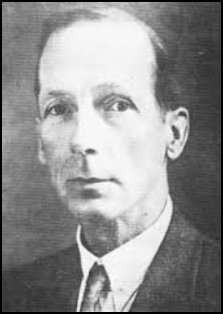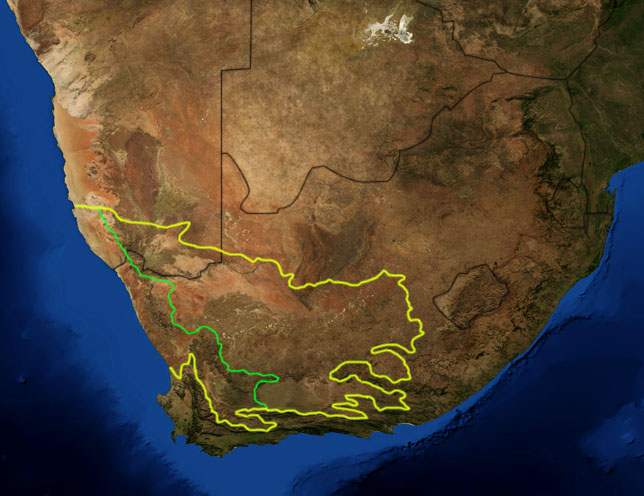Alex du Toit (1878 - 1948)
Photo Courtesy of Geological Survey, Pretoria
Biographical information
Alexander du Toit was a South African geologist who lived from 1878 – 1948. Du Toit graduated from the Royal Technical College in Glasgow, Scotland with a degree in mining engineering. He continued his studies by studying geology at the Royal College of Science in London and subsequently returned to Glasgow to lecture in geology, mining, and surveying at the Royal Technical College and the University of Glasgow.
Throughout his life, Alex du Toit worked as a geologist for various government organizations and private companies. During his employment with the Geological Commission of the Cape of Good Hope in South Africa, he mapped the entire 400,000 km2 Karoo area of South Africa, through the complete stratigraphy.
In 1923, du Toit was awarded a grant from the Carnegie Institution of Washington that commissioned him to study geology in Argentina, Paraguay, and Brazil and by 1927, he compared his South American geological work with his earlier work in South Africa and published the book, A Geological Comparison of South America with South Africa.
In 1937, du Toit, an ardent supporter of Alfred Wegener’s continental drift theory published what some consider his most well-known work, Our Wandering Continents; An Hypotheses of Continental Drifting.
Du Toit passed away in 1948, seven years after retiring from De Beers Consolidated Mines, where he served as Chief Consulting Geologist. Ironically, Du Toit was able to accomplish much of his own research in the last seven years of his life due to the fact he no longer was employed full time by a company or government agency.
Specific contributions to plate tectonic theory or geophysics
Du Toit’s work mapping the Karoo region of South Africa through the complete stratigraphy directly contributed to the advancement of the continental drift theory, and indirectly the plate tectonic theory. When Du Toit compared both the geological and paleontological stratigraphy from the coastlines of southwestern Africa and southeastern South America, he noticed the stratigraphy was nearly identical. Du Toit's geological work included the study of sedimintary rock formations, or tillites, left behind by glacial deposits and the study of various plant and animal fossils in South America and South Africa.
Du Toit was the first scientist to propose the theory of two original supercontinents separated by one ocean in his 1937 book, Our Wandering Continents; An Hypotheses of Continental Drifting. According to Du Toit, the two supercontinents, Laurasia, and Gondwanaland formed independently until Laurasia collided with Gondwanaland and formed Pangaea, approximately 200-300 million years ago. Du Toit based his conclusions in part on earlier geological and paleontological observations which he published in his book, A Geological Comparison of South America with South Africa
Other interesting scientific contributions
Du Toit studied groundwater geology in Australia and South Africa. In fact, Alex Du Toit served as a hydrogeologist for his native South African Forces during WWI. His work in mining, hydrogeology, and geology were well received in Europe.
Other cool stuff you should know
According to Nobel Prize winner Sidney Brenner who was fortunate to have gone on an expedition with Alex du Toit in 1947, du Toit believed very passionately in water divination. Water divination is the practice of using dowsing rods or sticks to "tune into" various forces from within Earth's crust to locate water, oil, or precious metals. Brenner, who a young man at the time found it very odd that a scientist as esteemed as du Toit believed in the practice of water divination, which has no scientific merit whatsoever. According to Brenner, du Toit even demonstrated his ability by finding a spring in the middle of the Kalahari desert using nothing but a tree branch as a dowsing rod.
Bibliography
Brenner, Sydney (1994). Geology. Expedition with Alexander du Toit. http://www.webofstories.com/play/sydney.brenner/32. Recorded: April - May, 1994. Retrieved: 4 February 2014.
Britannica.com (n.d.). Encyclopedia Britannica - Gondwana. http://www.britannica.com/EBchecked/topic/238402/Gondwana. Retrieved: 9 February 2014.
Haughton, S. H. (1949). "Alexander Logie du Toit. 1878-1948". Obituary Notices of Fellows of the Royal Society 6 (18): 385. doi:10.1098/rsbm.1949.0004. JSTOR 768931
Leeds.ac.uk (n.d.). Dispersal of Gondwanaland. http://homepages.see.leeds.ac.uk/~eargah/Gond.html. Retrieved: 3 February 2014.
Smith, Charles H. (2005). Some Biogeographers, Evolutionists and Ecologists: Chrono-Biographical Sketches. Du Toit, Alexander, Logie (South Africa 1878-1948). http://people.wku.edu/charles.smith/chronob/DUTO1878.htm. Retrieved: 2 February 2014.
Wikipedia.org (n.d.). Alexander di Toit. http://en.wikipedia.org/wiki/Alexander_du_Toit. Retrieved: 2 February 2014.
Wikipedia.org (n.d.). Laurasia. http://en.wikipedia.org/wiki/Laurasia. Retrieved: 3 February 2014.
Wikipedia.org (n.d.). Dowsing. http://en.wikipedia.org/wiki/Dowsing. Retrieved: 3 February 2014.

